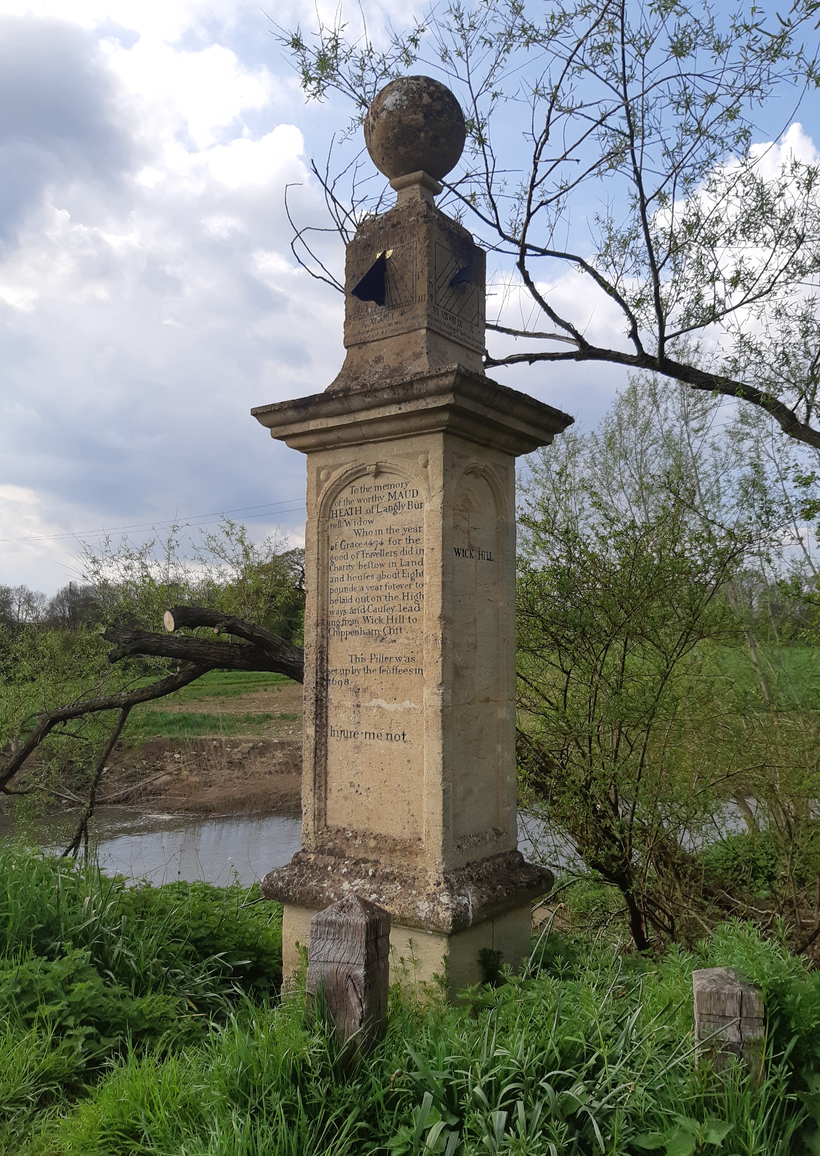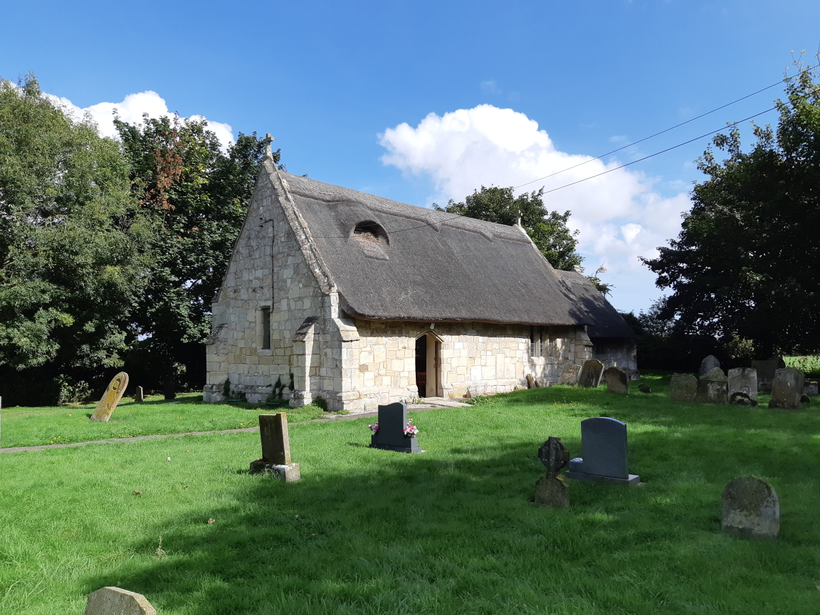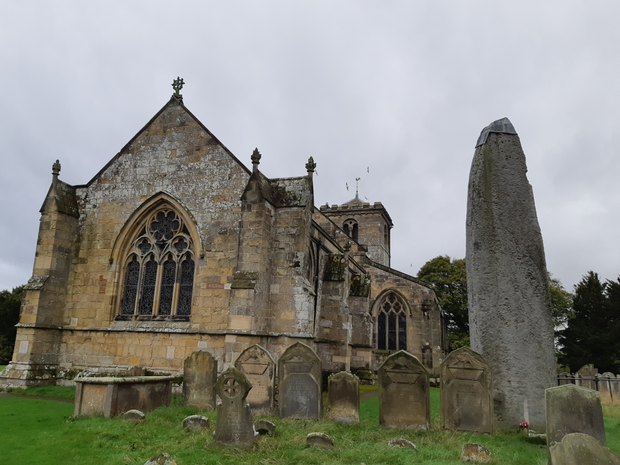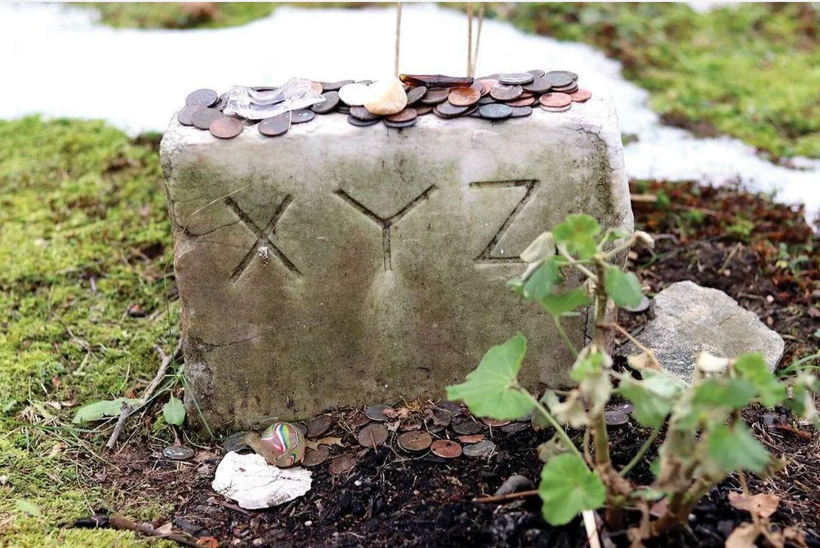So, what makes this causeway so special, and while we’re at it, what exactly is a causeway? Well, to answer the latter, a causeway can be a railway, road or raised path that covers an area of low ground or wetland. It differs from a bridge in that is has little or no space beneath it.
This particular area in Bremhill is known as ‘Maud Heath’s Causeway’, so named after a benevolent local woman who passed away centuries before.

Maud Heath was an incredibly wealthy widow who bequeathed a handful of properties to the town of Chippenham in 1474. Held in a trust, the proceeds would be used to build and maintain a substantial causeway for locals to use between Bremhill and Chippenham. In creating stable footing, travellers on foot or with a horse and cart would be able to travel through the county with ease, avoiding getting stuck or filthy in thick mud. The causeway spans the Avon floodplain, with the archways making for quite the dramatic view between pillar and church.

The route of Maud Heath’s causeway is popular with walkers, with information boards scattered around the area, encouraging walkers to follow the full 4.5 (or 10, if you follow the full path) mile route. While I’m sure it’s a lovely way to spend an afternoon, mine was a fleeting visit, aided by a hatchback and a pub lunch reservation creeping ever closer.
But despite Maud making her generous donation in the 15th century, the first public acknowledgement of her act was made in 1698 when trustees of the properties erected a large memorial pillar beside Kellaways Bridge (just after the traffic lights). The pillar was slightly changed over the years, through restoration and so forth, but records one of few relatively unbiased depictions of the widow.

The limestone pillar was originally decorated with Latin inscriptions, yet these were translated and ‘paraphrased’ in 1827 by the Rev. William Lisle Bowles, with this translation now flanking the side. Bowles was a noted eccentric, ‘filling his garden with grottoes, urns and hermitages and keeping sheep in the churchyard with their bells tuned in thirds and fifths’.[1] He was also a keen poet, with Wordsworth and Coleridge as close friends. The monument still possesses a little Latin, as the sundial has a latin inscription on each face, which includes phrases such as ‘time flies’ and ‘I will return you never.’

It reads:
‘To the memory Of the worthy MAUD HEATH of Langley Burrell Widow Who in the year of Grace 1474 for the good of Travellers did in Charity bestow land and houses about Eight Pounds a year forever to be laid out on the Highways and Causey leading from Wick Hill to Chippenham Clift. This Piller was Set up by the feoffes in 1698 Injure me not’
This simple, factual record of Maud’s life (now topped with a rather jazzy sun dial) stands in stark contrast to depictions of Maud that have grown and developed over the centuries, thanks to the additions and embellishment of storytellers. As with most tales passed on through oral tradition – Robin Hood being the most prominent – the Maud of local tradition and regional history books has little basis in historical fact. According to Bremhill Parish:
“Oral tradition paints a picture of Maud as a market trader who bought eggs, butter, cheese and other produce from local farms selling them at markets most likely held near or at the, site of Yelde Hall in the centre of Chippenham, not far from the properties that she and her husband John had owned.
Other, more fanciful accounts give a far different insight- “By common report a market woman, who having felt by sad experience the inconvenience of a swampy walk, especially in the conveyance of such perishable wares as butter and eggs, devoted her life savings to the laudable purpose of providing a good footing for her successors in all time to come.”
As such, Maud has a dual existence, one being a simple trader, the other being a frustrated peasant covered in mud and egg. Both make for pleasant enough stories, but neither have historical footing.

Curiously, Maud’s legal ownership of the properties is arguably one of the more interesting aspects of her story. In the 15th century, married women were not permitted to own property, yet this barrier was lifted after her marriage vows were nulled by the death of her husband. Being a widow, she was in a far better financial position than if her husband had lived. Presumably childless, or having no living heirs, she was in a prime position to bequeath her hefty inheritance to her community, thus being one of very few 15th century women to have their names recorded in local ledgers.
Maud’s causeway and legacy remains in the hands of the same board of trustees (it goes without saying that the members have changed, but the principle remains) and exists as one of the oldest and longest-running private trusts in the UK.
***

Liked this post? Then why not join the Patreon clubhouse? From as little as £1 a month, you’ll get access to tonnes of exclusive content and a huge archive of articles, videos and podcasts!
Pop on over, support my work, have a chat and let me show you my skulls…www.patreon.com/burialsandbeyond

Liked this and want to buy me a coffee?
To tip me £3 and help me out with hosting, click the link below!
https://ko-fi.com/burialsandbeyond
***
Further Reading:
https://bremhillparishhistory.com/article/maud-heaths-causeway
https://www.walkscene.co.uk/description_34/maud_heath_causeway
[1]https://www.ratedtrips.com/walking/bremhill-and-maud-heaths-causeway





Leave a comment